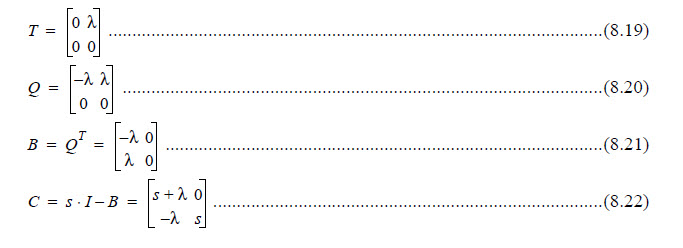Reliability
Reliability is the probability that the system operates (is in a good state) continuously over the specified period. Therefore, it can be viewed as the probability that the system is in a good state and that there are no system repairs (or system failures). This means, once the system reaches a failed state, it cannot be repaired. Hence, to compute system reliability, the transitions that correspond to repairs in a failed state need to be removed.
In the single-component example, state 2 is a failed state. To compute reliability, repairs should not be considered in this state. Therefore, the transition from state 2 to state 1 will not be there (or the transition rate for it will be zero). Figure 8-7 shows the resulting state transition diagram.

Hence, the matrices, T, Q, B and C, are:


Thus, system reliability, R(t), is:

The above procedure shows that Markov analysis is difficult in comparison with the RBD method and fault tree analysis. The above procedure is used to find analytical solutions. However, the numerical solutions of Markov chains are also relatively easy to find. It should be noted that Markov models are the only correct models for highly dependable complex systems.